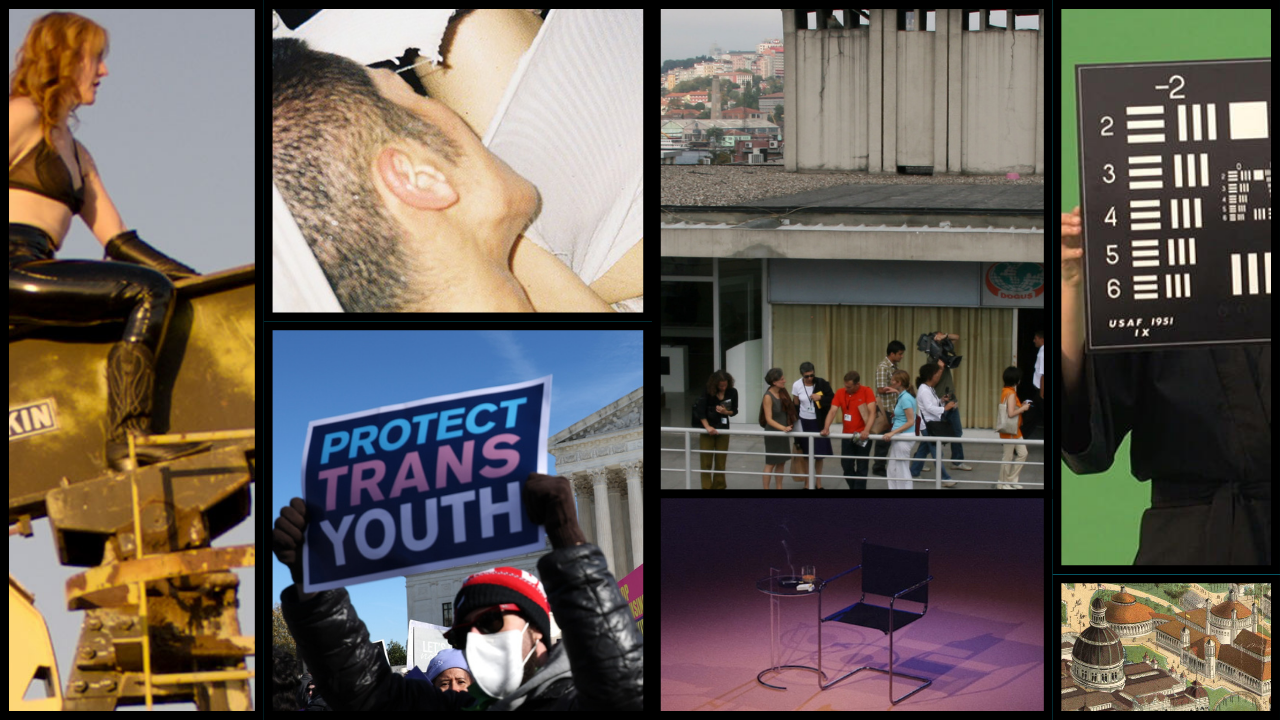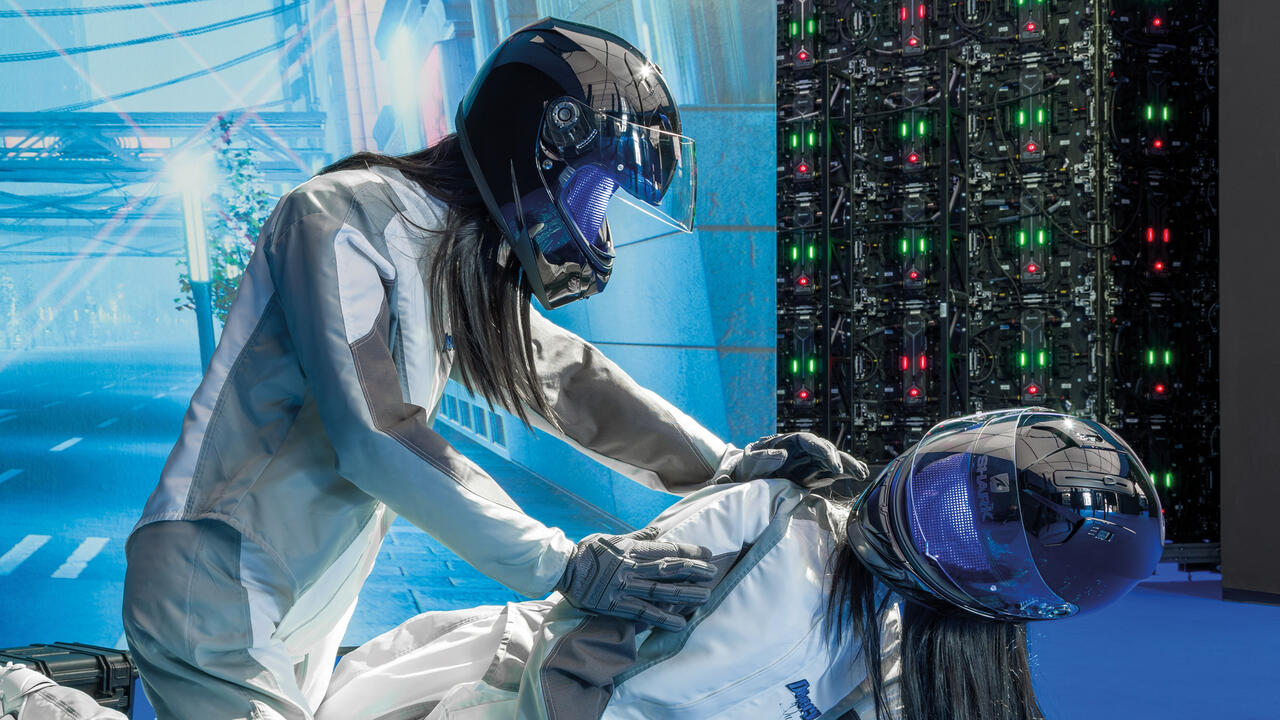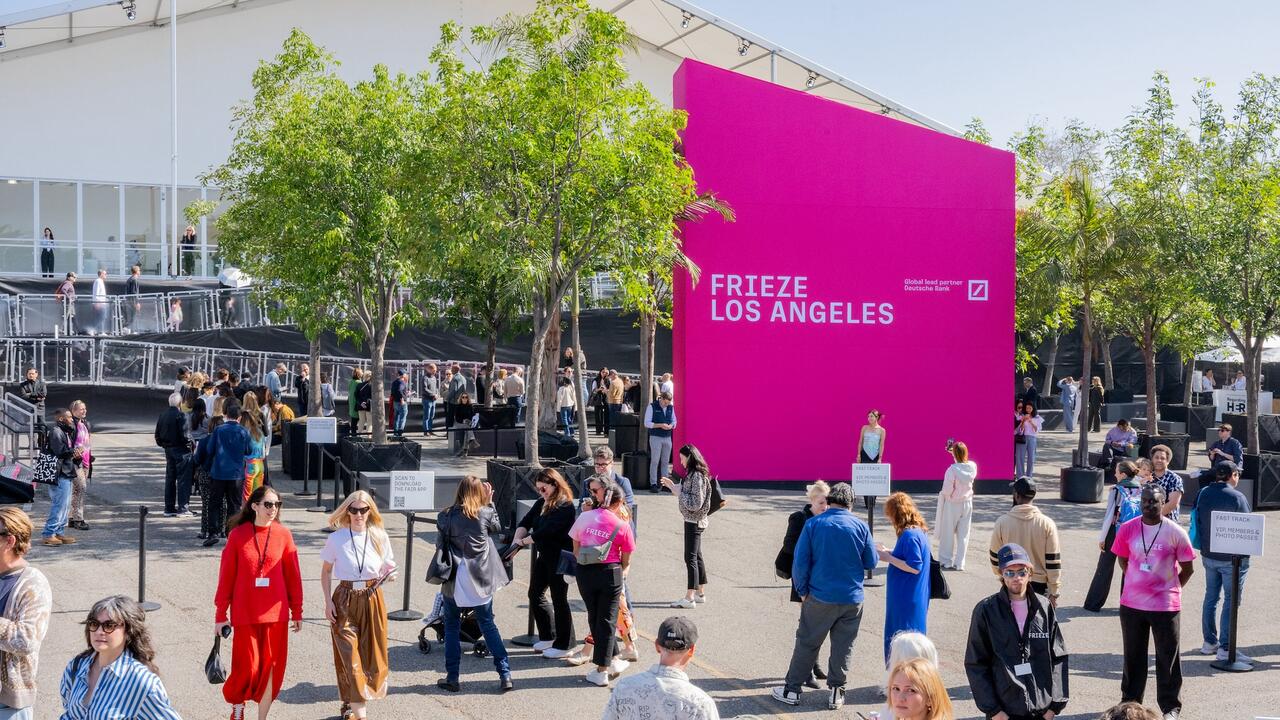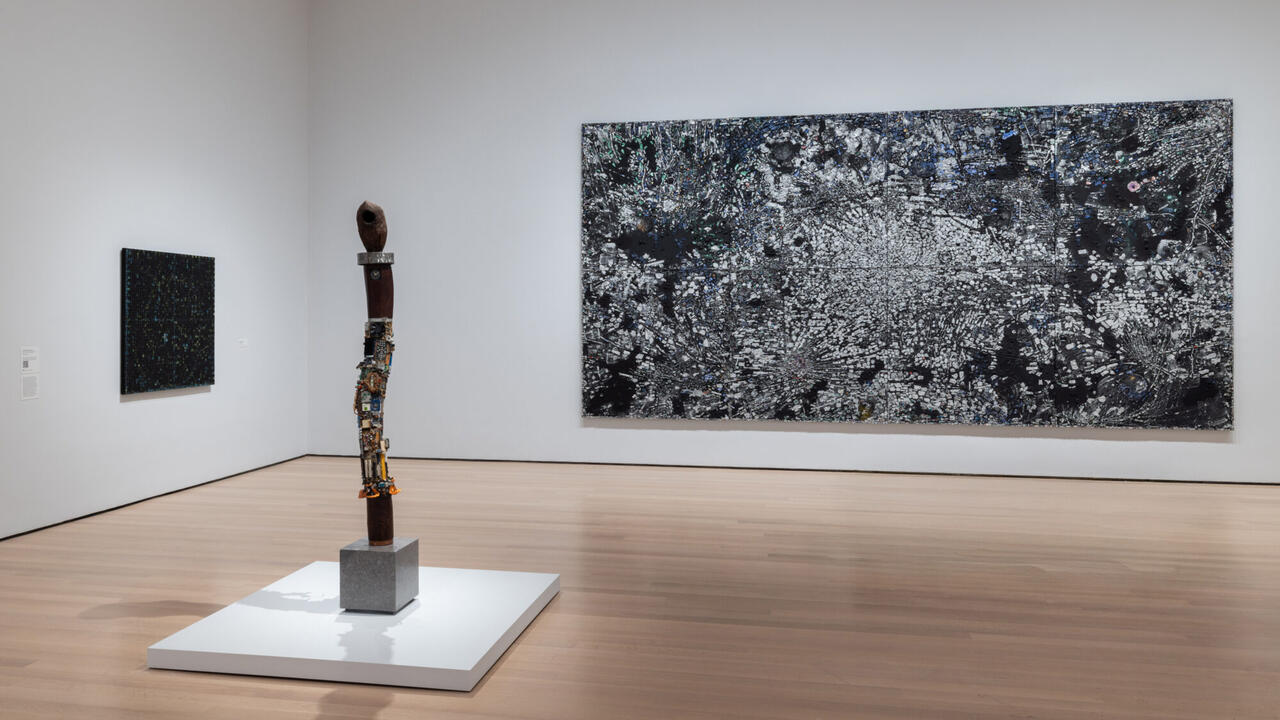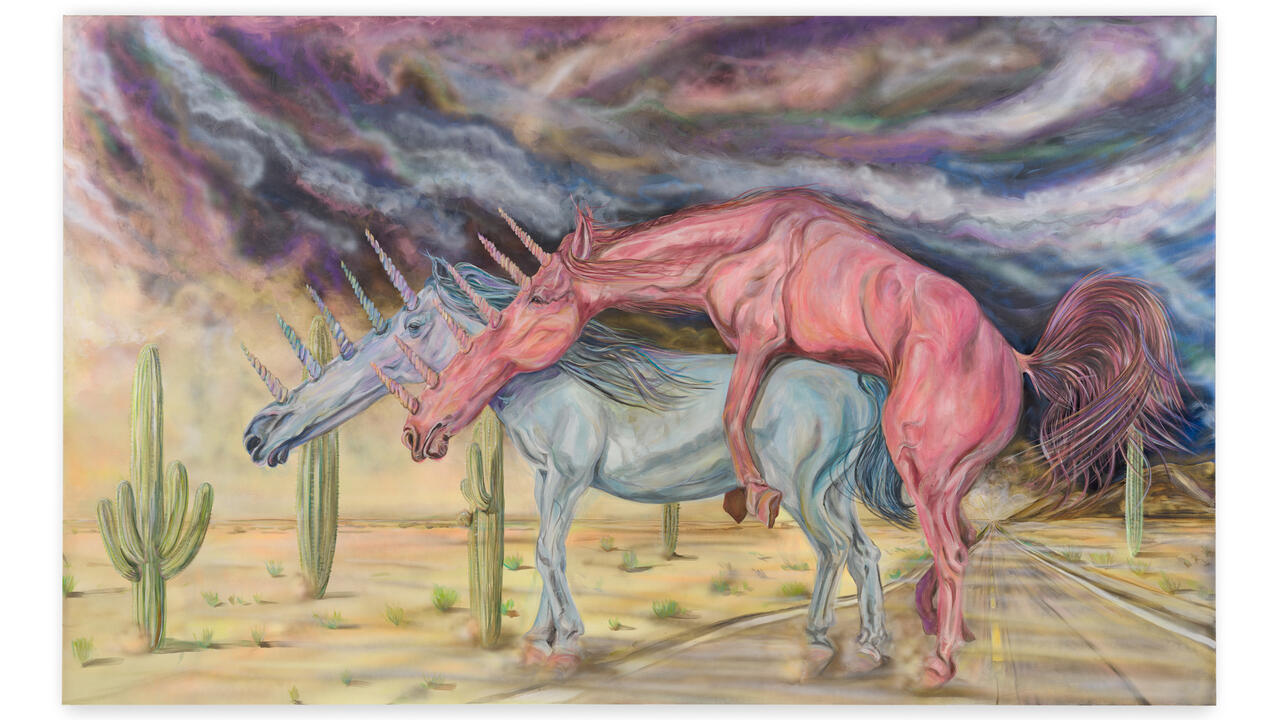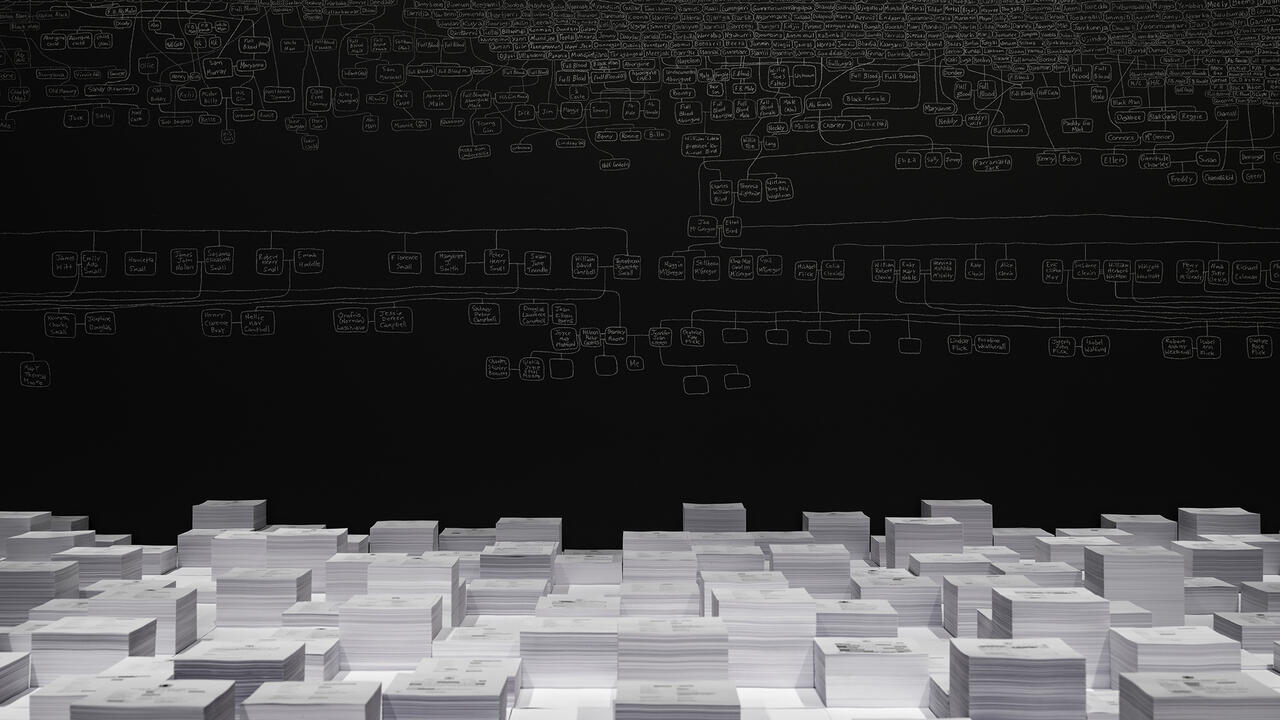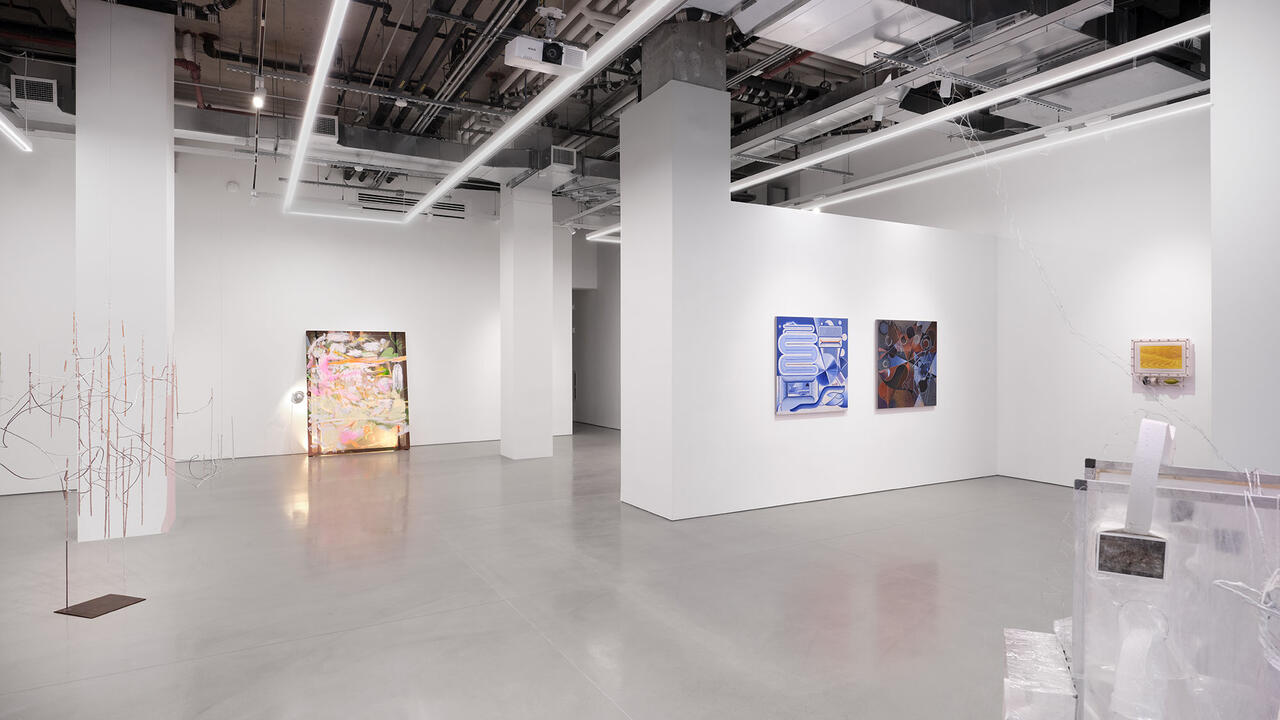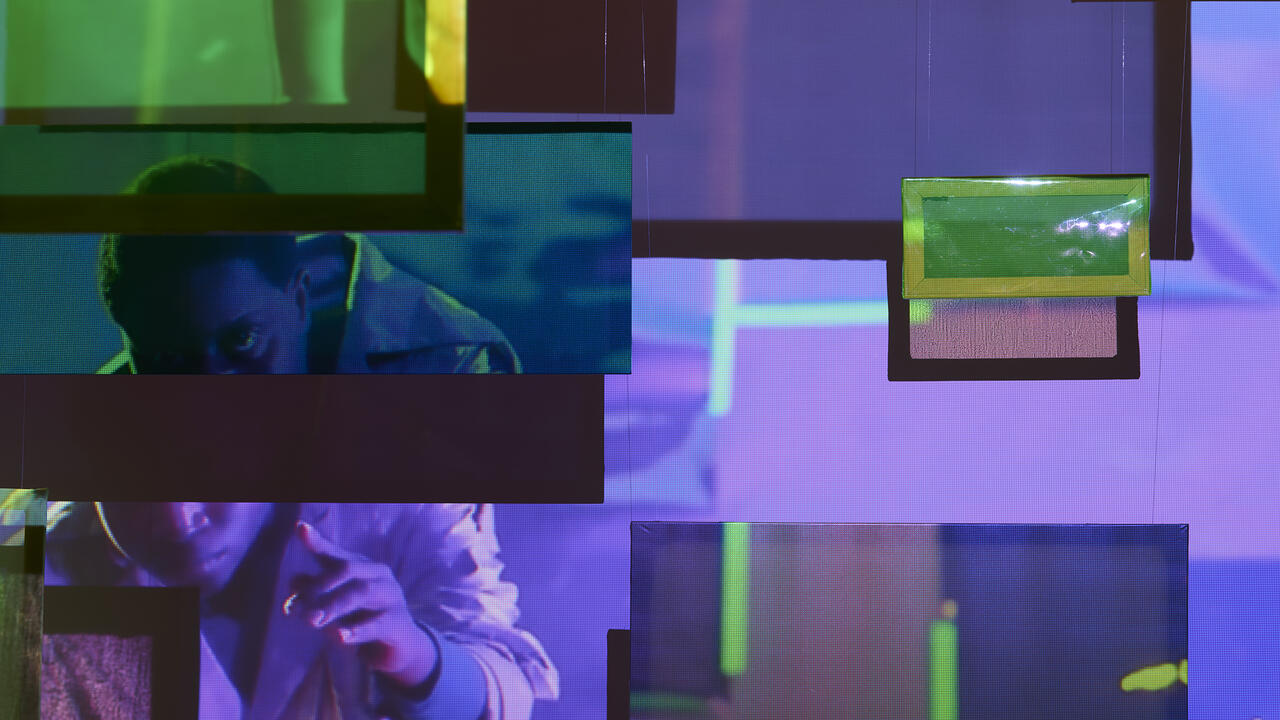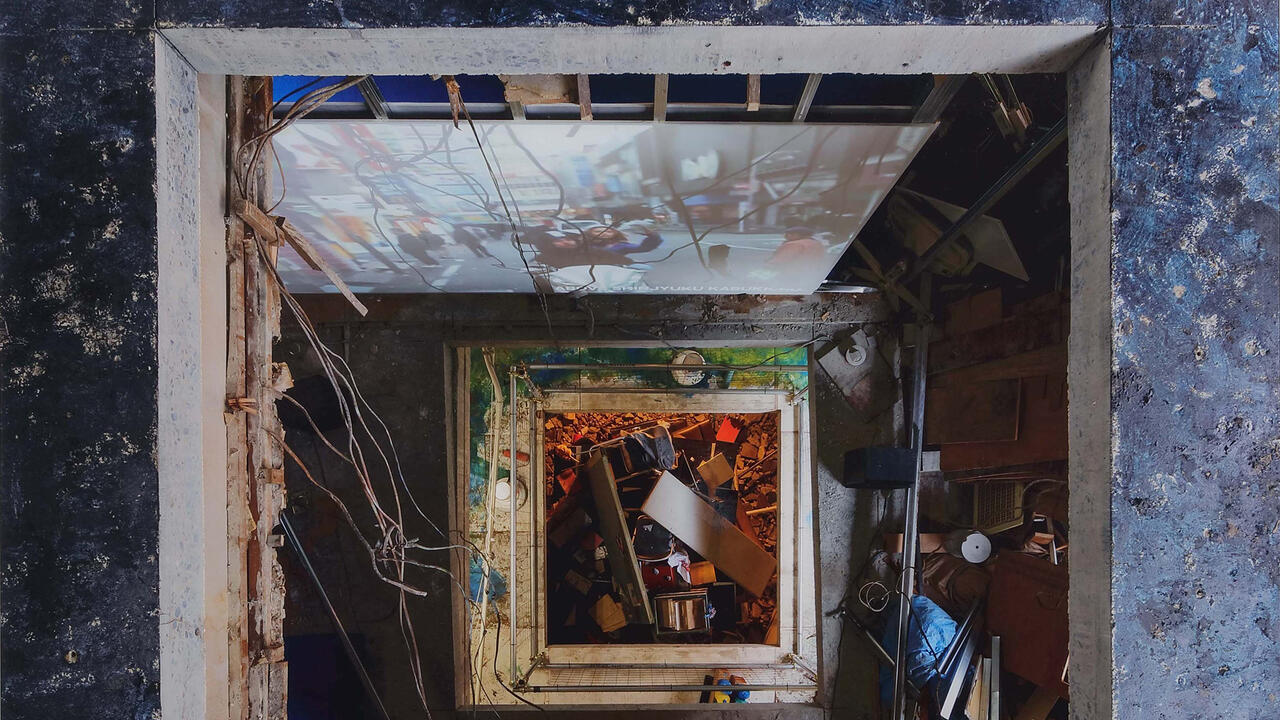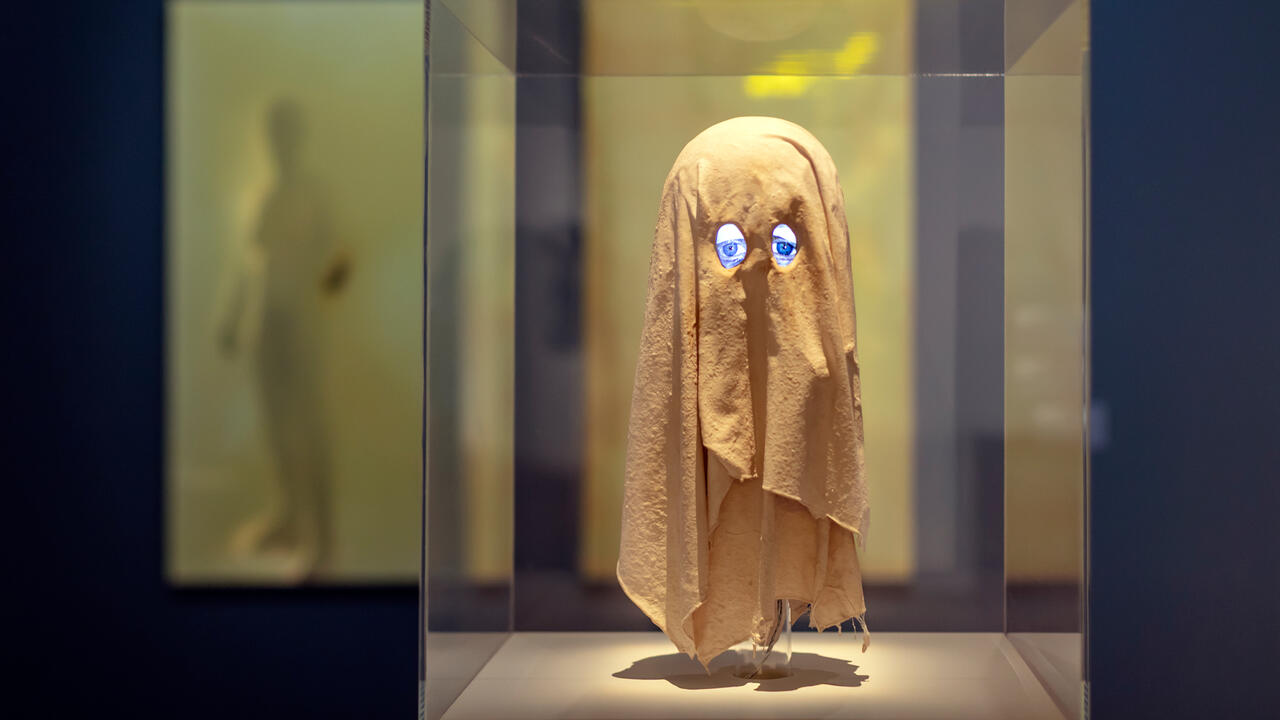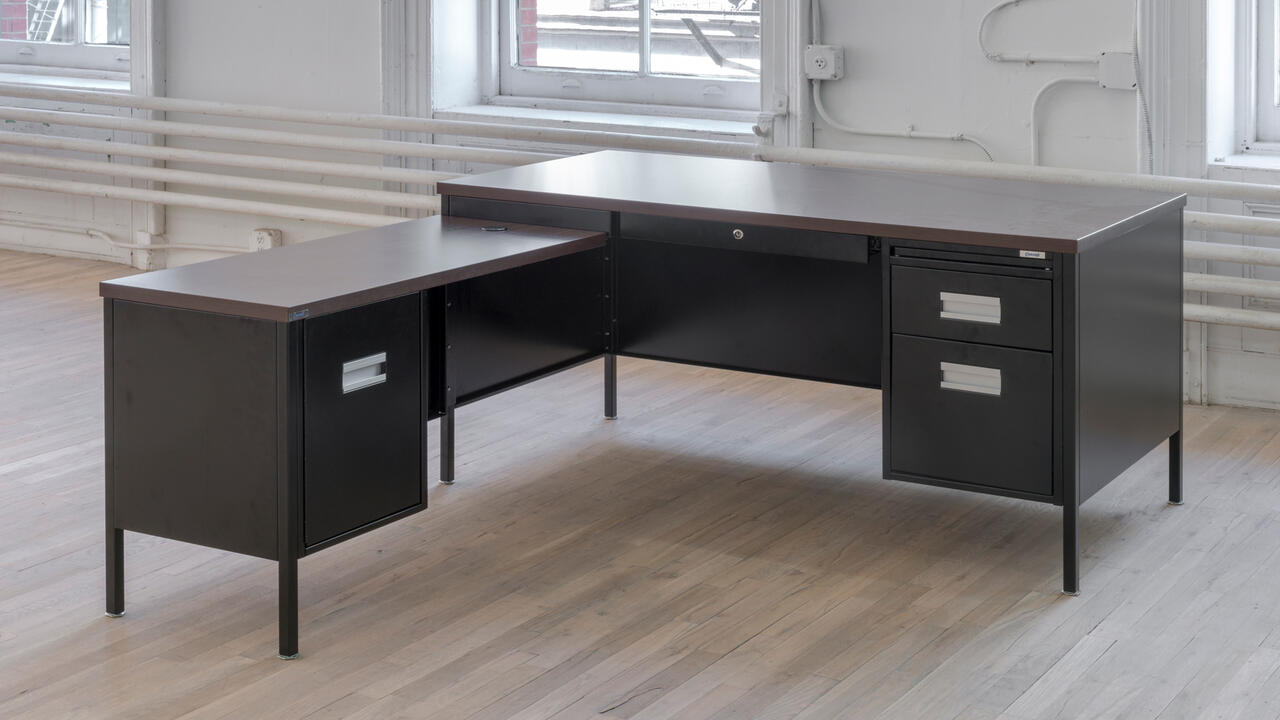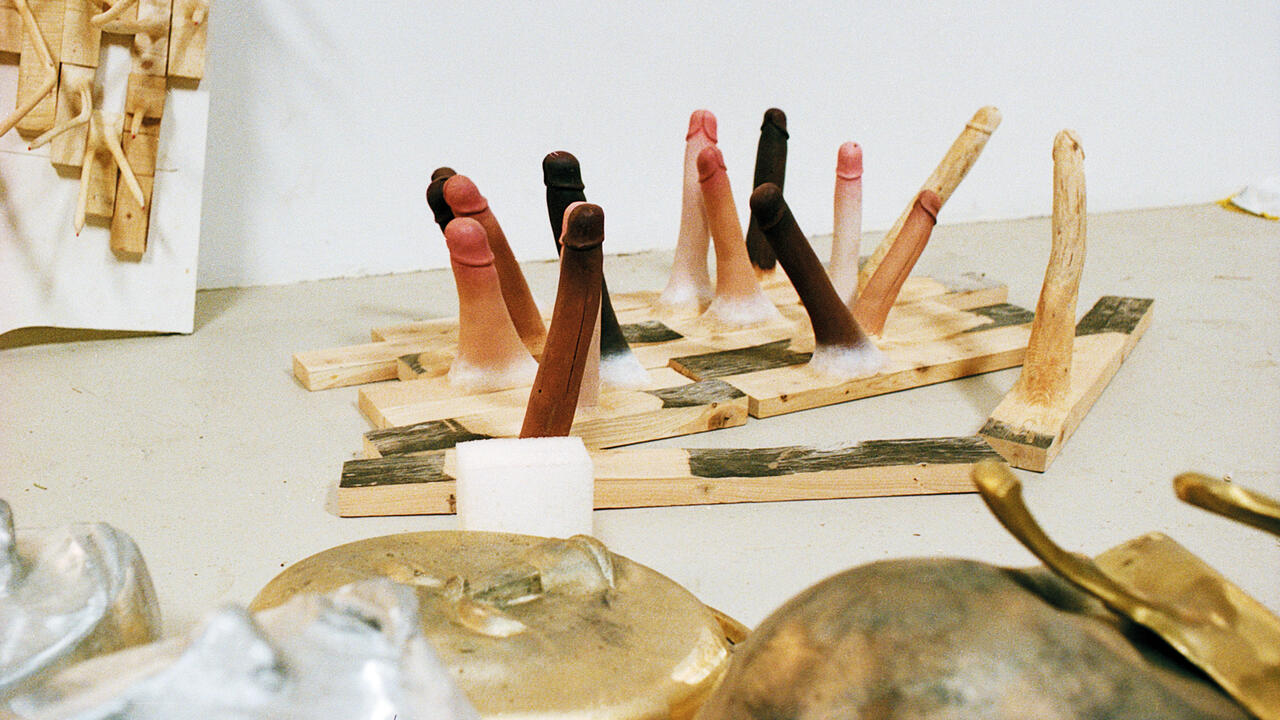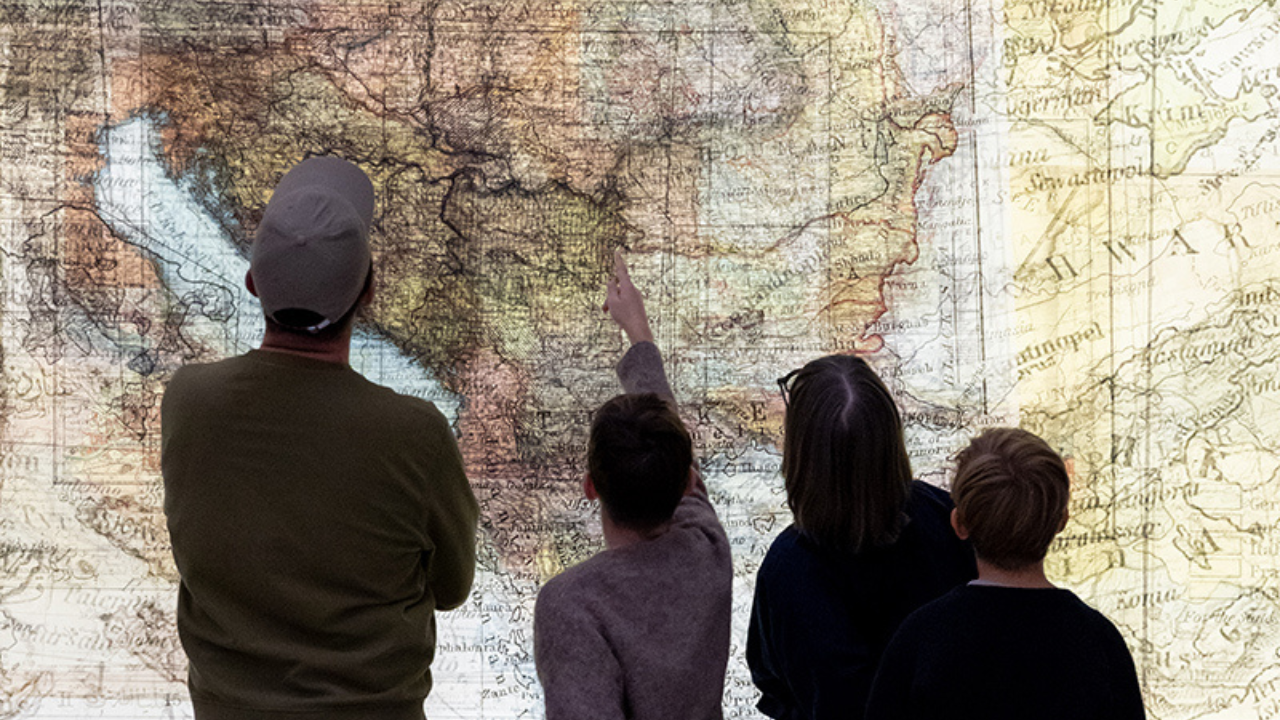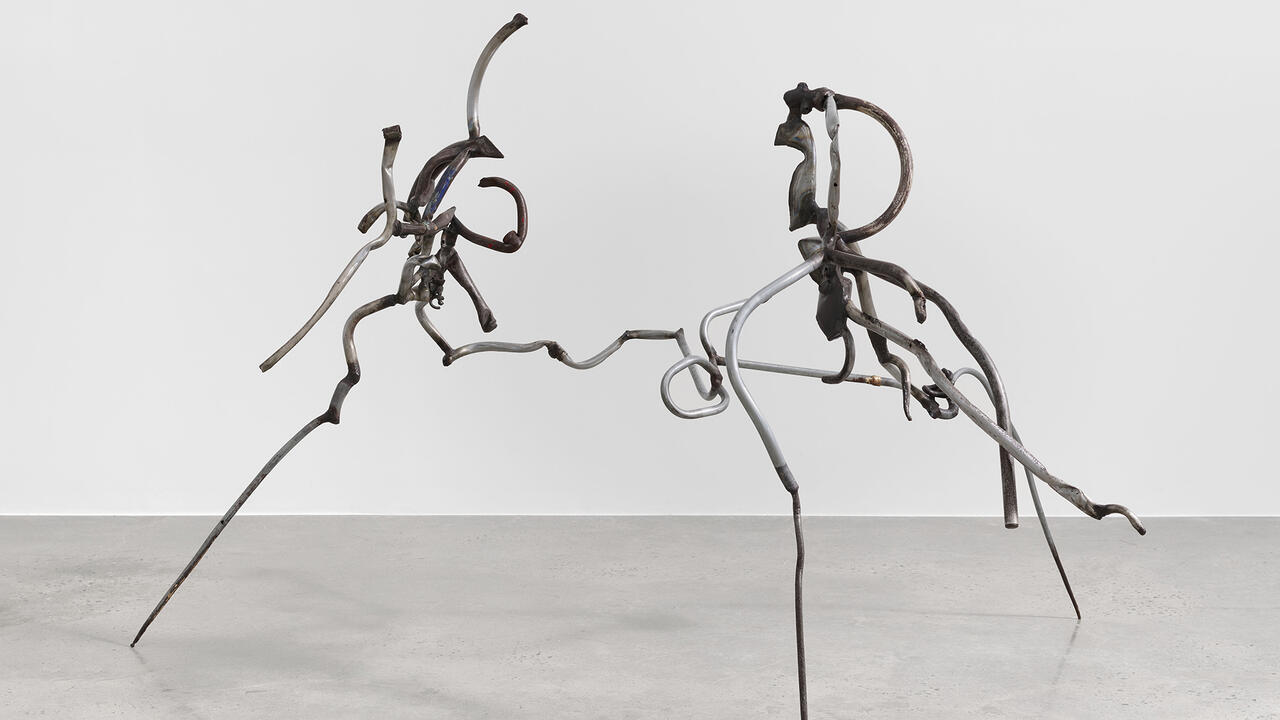7 Shows to See During Frieze New York 2025
From Sam Moyer’s doubleheader to Kang Seung Lee’s poignant investigation of ageing, here’s what to see in New York now
From Sam Moyer’s doubleheader to Kang Seung Lee’s poignant investigation of ageing, here’s what to see in New York now

Lotus L. Kang | 52 Walker | 11 April – 7 June

Two greenhouses in Lotus L. Kang’s solo show at 52 Walker, ‘Already’, offer a glimpse into her creative laboratory. Within these spaces, Kang exposes what she calls ‘skins’, referring to unfixed photographic film. A wide sheet of this film hangs inside one greenhouse, Receiver Transmitter (49 Echoes I) (2022–25), alongside small objects including plaster- and aluminium-cast birds and dried lotus tubers. In the artist’s nearby ‘Molt’ series (2022–25), film cascading from the ceiling changes colour over time, recalling In Cascades (2023), the installation that earned her acclaim at the 2024 Whitney Biennial. Adapting to the environment, the light-sensitive material in these installations speaks to our own development as we experience the world around us, embodying themes of impermanence and transformation. You can read Simon Wu’s profile of Kang for frieze here.
Sam Moyer, ‘Woman with Holes’ and ‘Subject to change’ | Hill Art Foundation; Sean Kelly Gallery | 1 May – 1 August; 2 May – 14 June

Multidisciplinary artist Sam Moyer’s practice is on full view in concurrent exhibitions at Hill Art Foundation and Sean Kelly Gallery. Included in the latter presentation are new abstract paintings on canvas with reclaimed inlaid stones arranged into fernlike forms. Meanwhile, the institutional show provides context for these paintings with its focus on the artist’s penchant for incongruities and contradictions across a variety of media. In terrazzo soapstone sculptures, abstract slabs interlock like a jigsaw puzzle, delicately balanced to support one another – a relationship evoked by titles like Dependents 7 (2021). The exhibition further contextualizes Moyer’s practice by displaying her work alongside pieces from the collection by artists including Vija Celmins and Isamu Noguchi.
Kang Seung Lee | Alexander Gray Associates | 26 April – 31 May

Time collapses in Kang Seung Lee’s solo show at Alexander Gray Associates, ‘Body of Memory’ – the South Korean-born, Los Angeles-based artist’s first presentation with the gallery. Across drawing, mixed-media assemblage and video, Lee considers the body – in particular, the queer body – as a vessel of remembrances and a personal archive. Focusing on skin, he characterizes aging as not a path towards death but as a continuous process of regeneration. In the film Skin (2024), Meg Harper, a dancer in her 80s, is seen performing from memory, her wrinkles evidence of the body’s capacity to be both weathered and resilient. Lee’s assemblages, meanwhile, pair visual references to queer history with wood veneer – the skin of trees – marked with traces of burl or knots. ‘These knots are formed through injury, through disease,’ Lee tells me. ‘This process, this trauma, creates something beautiful.’
Pierre Huyghe | Marian Goodman Gallery | 6 May – 21 June

Teetering between otherworldly and post-apocalyptic, ‘In Imaginal’ at Marian Goodman Gallery is an immersive presentation of Pierre Huyghe’s unnerving ability to challenge the viewer’s understanding of reality. Creating fictional narratives, Huyghe’s films, sculptures, photographs and installations examine the relationship between the human and the nonhuman. In the film Camata (2024), also shown at Punta della Dogana during the 2024 Venice Biennale, machine-learning robots in the Atacama Desert perform a ritual on a found human skeleton. Using artificial intelligence, Camata endlessly edits itself in response to sensors in the gallery. Also using AI to learn in real time are Huyghe’s alien-like gold masks, Idiom (2024), which mumble an unintelligible language: a haunting soundtrack to accompany the viewer’s experience.
Sanya Kantarovsky | Michael Werner Gallery | 8 May – 3 July

Sanya Kantarovsky took longer than usual to finish the new paintings, works on paper and monotypes for his solo, ‘Scarecrow’, at Michael Werner Gallery. The artist, who is known for figurative work full of humour and angst, originally intended the show to open last October, but decided to postpone, taking time to revisit the pieces and ‘acclimate to them beyond just a simple feeling of approval or disapproval’, he tells me. During this time, Kantarovsky saw his subjects evolve and become less grounded in a specific narrative. ‘A painting would pivot slightly or drastically because of an experience, an exhibition, a piece of writing,’ he explains. Still, the works on view reference real events, such as the death of Hera – the dog of artists Dana Sherwood and Mark Dion – who Kantarovsky depicts lying peacefully covered in flowers (Hera, 2025).
Catherine Opie | Lehmann Maupin | 3 April – 10 May

From Yves Klein’s fixation with International Klein Blue to Pablo Picasso’s depressive Blue Period, the colour blue has long been a source of inspiration for artists. In Catherine Opie’s meditative investigation of the hue at Lehmann Maupin, ‘A Study of Blue Mountains’, new photographs and ceramic sculptures – of which this exhibition is her first presentation – showcase the ephemeral, shifting shades of the sky over Norwegian mountaintops. Opie’s keen focus on the subtle variations of light and atmosphere offers a stunning display of the range of nature’s beauty, transporting the viewer to the fleeting moment each tone was captured. The breathtaking blue of Untitled #9 (Norway Mountain) (2024) seems to spill onto the custom plinth that holds Opie’s quaint earthenware mountains.
‘The Making of Modern Korean Art: The Letters of Kim Tschang-Yeul, Kim Whanki, Lee Ufan and Park Seo-Bo, 1961–1982’ | Tina Kim Gallery | 5 May – 21 June

‘The Making of Modern Korean Art’, an exhibition and publication of the same name, offers a deeply researched, intimate view of the challenges artists in Korea faced in the aftermath of the Korean War (1950–53). In the absence of institutional support, and amid political and social upheaval, artists looked to one another for succour, writing letters that expressed shared concerns. On view at Tina Kim Gallery alongside works by the artists who penned them, such archival materials situate their practices within the postwar context. The letters offer not only glimpses of the personalities of the authors – Kim Tschang-Yeul’s humour contrasting his reticent demeanour, as the publication describes him – but also insights into how their handwriting relates to their artistic styles, with Park Seo-Bo’s note recalling his well-known series of calligraphic paintings, ‘Écriture’ (1967–2023).
Main image: Kang Seung Lee, Untitled (Skin, Constellation 5) (detail), 2024, graphite, watercolor, acrylic, paper, goatskin parchment, mother of pearl buttons, antique 24K gold thread, sambe, fern fossil from Carboniferous period, wild olive burl, maple burl, acasia thorn, straw braid, drift wood, bookbinding cord, dried seeds, dried palm leaf, piercing needle, pebble, pearls, silver wire, ash olive burl veneer mounted on Dibond, walnut frame, 123 × 245 × 6 cm. © 2025 Kang Seung Lee, courtesy: Alexander Gray Associates, New York; Commonwealth and Council, Los Angeles and Mexico City; Gallery Hyundai, Seoul


